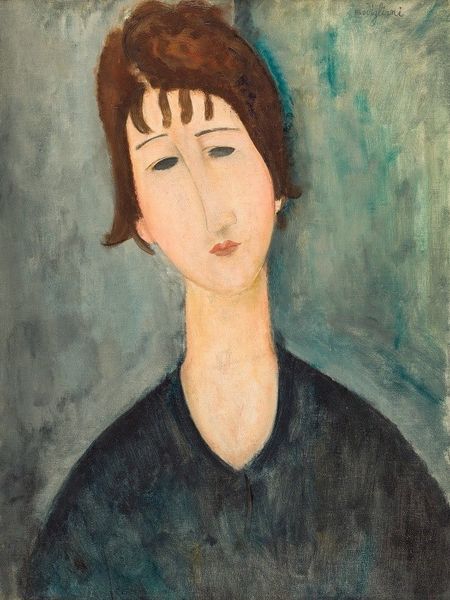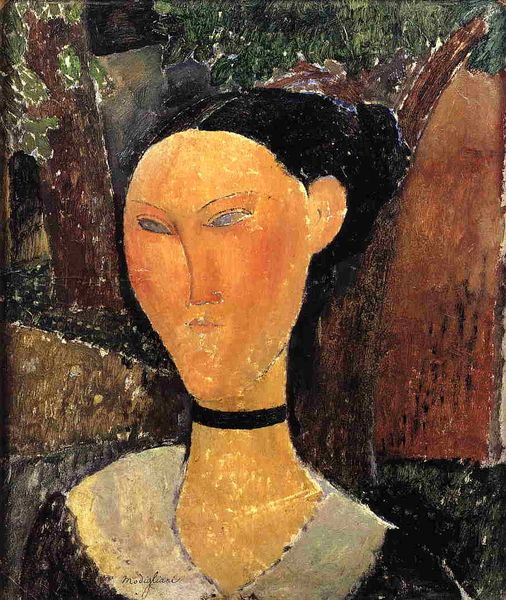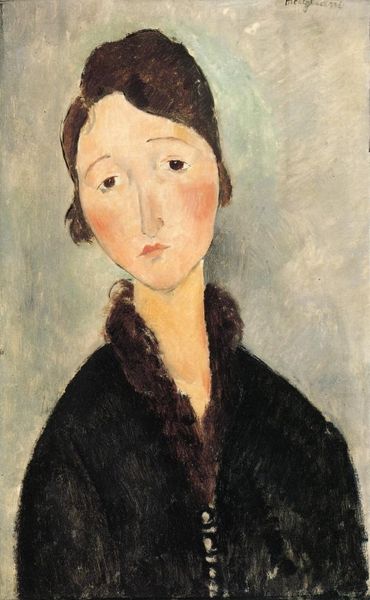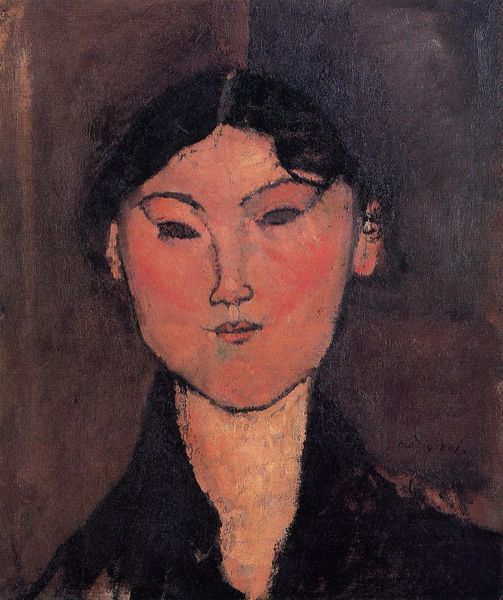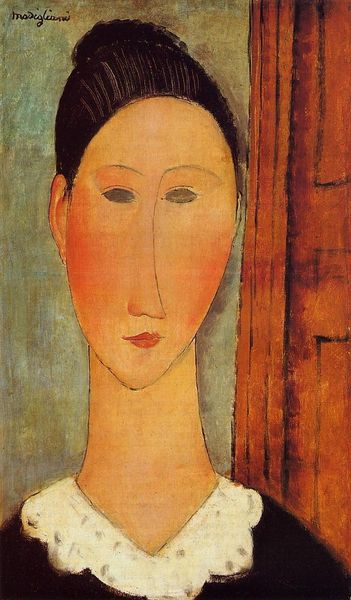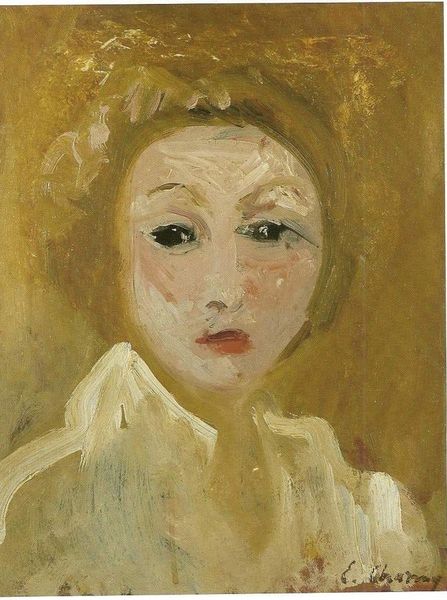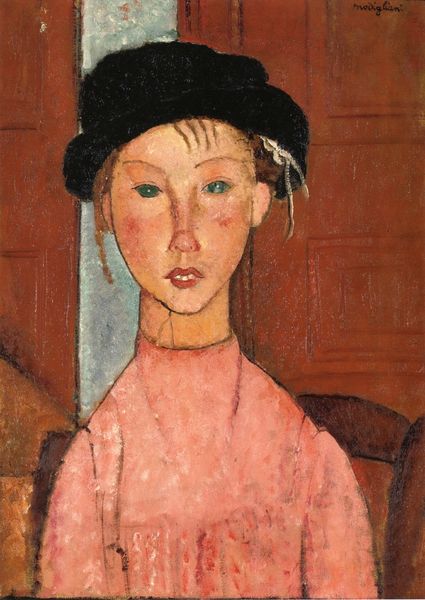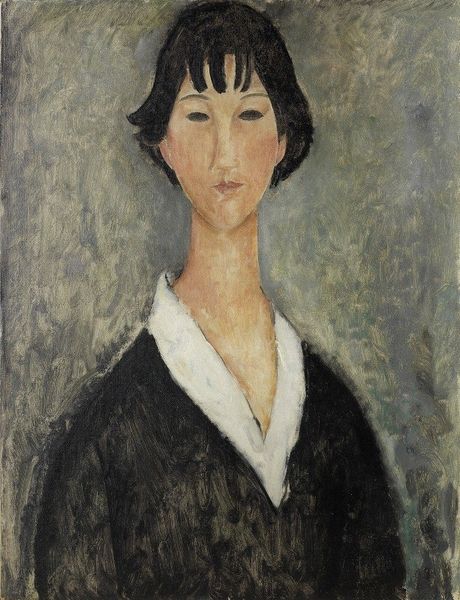
painting, oil-paint
#
portrait
#
art-nouveau
#
self-portrait
#
painting
#
oil-paint
#
oil painting
#
symbolism
Copyright: Public domain US
Editor: This is Marie Laurencin’s “Self-Portrait,” an oil painting created in 1908. The color palette is subdued, and her gaze is intense. What strikes you about this piece? Curator: The structure of the composition, particularly the use of light and shadow, commands immediate attention. Observe how the artist has bisected the face with light, creating two distinct planar zones. The almost geometric simplification, combined with the muted tonality, underscores a certain formal tension. Do you see how the contours are flattened? Editor: I see that now! The contrast gives it a striking simplicity. It feels very modern. How does the materiality contribute to its impact? Curator: Laurencin’s application of paint is key. Notice the brushwork, how the viscosity and texture create subtle modulations on the surface. This technique directs the eye and lends itself to deciphering the subtle geometry and tonal arrangements she sets up in the composition. There is an interesting tension between the planar simplicity of the face and the brushstrokes. Do you agree? Editor: Definitely. The way the colors and texture interplay gives a subtle liveliness to the seemingly simple form. It's less flat than I initially perceived. Curator: Precisely. We have barely scratched the surface of what the relationships between colour and line have to say in the symbolic field. But understanding that this is the start to how to decode the construction, it should be obvious what to investigate next. Editor: This formalist perspective is completely different from what I considered when I first saw this piece, I appreciate understanding it at a deeper level. Curator: A new lens, offering insights from within.
Comments
No comments
Be the first to comment and join the conversation on the ultimate creative platform.

